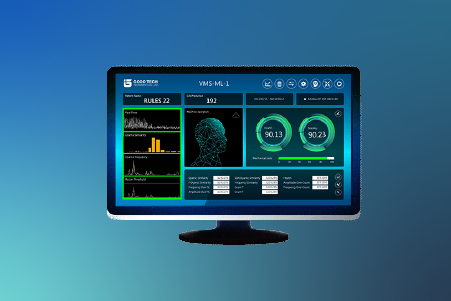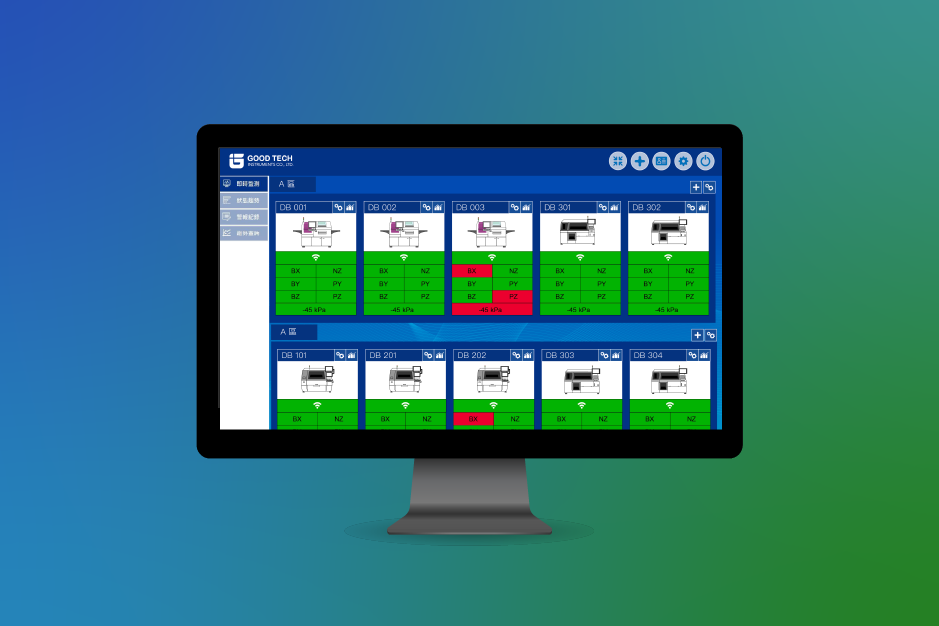Vacuum Suction Issues in Pick-and-Place Operation?
Case|Vacuum Suction Issues in Pick-and-Place Operation?The Pick & Place Machine has become an essential device on modern production lines. Utilizing precision mechanisms and vacuum suction technology, it enables fast and accurate positioning and transfer of components. However, if vacuum suction becomes unstable during actual operation, it can directly impact machine efficiency, product yield, and may even cause a complete production line shutdown.
Pick & Place Machine Operating Process
The Pick & Place machine is an automated device commonly used in semiconductor manufacturing, electronic packaging, and precision part processing. Its primary function is to pick components from the feed area and accurately place them in designated positions.
First, sensors check if components are present in the feed zone. Then, the system uses vision or positioning modules to determine the exact location and orientation of the object. Once confirmed, the robotic arm lowers its vacuum nozzle to the component surface and activates suction to pick up the part. After successful pickup, the arm moves the component along a pre-defined path and releases it at the target location by stopping the vacuum, completing one Pick & Place cycle. This process is repeated continuously to support a stable automated workflow.
1. Material Detection: Sensors verify if components (e.g., wafers or ICs) are in the feed area.
2. Position Calibration: Vision system confirms object position to avoid misalignment.
3. Picking: Vacuum nozzle descends and activates suction to pick the object.
4. Transfer: Robotic arm moves the object to the target position.
5. Placement: Vacuum is released, and vision or sensors verify precise placement.

Impact of Vacuum Suction Abnormalities
| Type/Condition | Cause | Impact |
|---|---|---|
| Unable to pick up the workpiece | Vacuum pump failure, nozzle blockage, pressure leakage, or damaged vacuum tubing. |
• Workpiece cannot be picked up from the material area; • Automated process is interrupted, causing production line downtime; • Repeated pickup attempts cause mechanical wear. |
| Insufficient suction, workpiece dropped | Unstable suction; material surface unsuitable for vacuum pickup (e.g., rough or uneven). |
• Workpiece falls and is damaged during transfer; • Possible material jams or damage inside the machine; • Yield drops; manual intervention required. |
| Misaligned or incorrect pickup angle | Nozzle wear, uneven vacuum surface, or detection errors. |
• Placement position is off; • Workpiece may not fit properly, causing assembly issues; • Downstream process errors or inspection failures. |
| Sensing error during pickup | Sensor falsely detects success or failure of pickup. |
• False negative → repeated actions cause delays; • False positive → empty pickup proceeds, leading to failed placement or missing parts. |
Monitoring Overview
VMS-ML Machine Learning Intelligent Monitoring System
The stability of vacuum suction greatly impacts the performance of pick-and-place machines. By using a machine learning-based monitoring system, the system learns correct vacuum pressure signals and establishes training patterns, enabling real-time monitoring of suction variations to improve pickup stability. It can also integrate with edge IoT platforms to monitor additional factory equipment data, such as ESEC DB hook track signals, current characteristics, wedge bond status, and cutter blade quality in dicing machines.
Measurement Status
Signal Graph Description
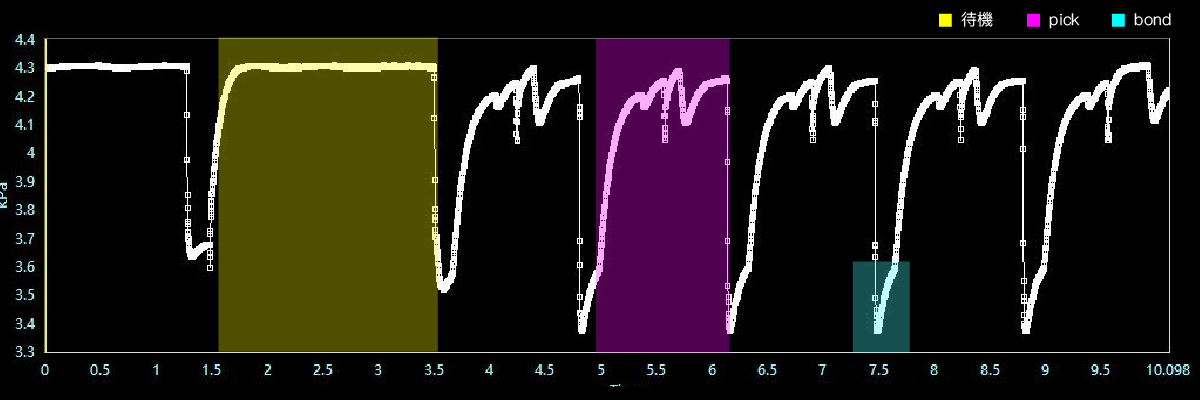
Vacuum Value Comparison
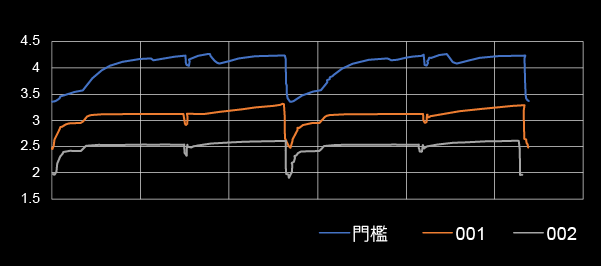
As the vacuum level decreases, the signal shape becomes smaller, showing differences from normal operation.
Pick-Up Miss Comparison
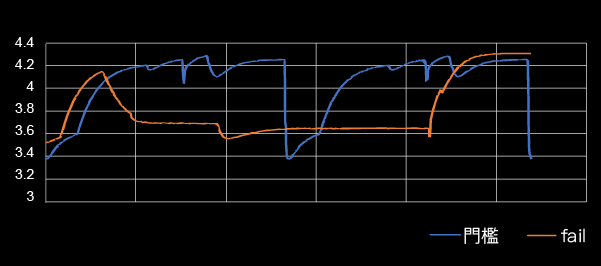
Vacuum gauge shows no chip was picked up, resulting in low vacuum level without pick action.
Ejector Signal Monitoring Validation
| Speed | Pickup Time | States | OK / NG |
|---|---|---|---|
| Golden | Golden | Normal (3-stage ejector motion) | OK |
| Golden | Pickup time extended in 3 stages | Normal | NG |
| Slower speed in 3 stages | Golden | Normal | NG |
| Golden | Golden | Only 1-stage ejector motion | NG |
| Golden | Golden | Only 2-stage ejector motion | NG |
| Golden | Golden | Ejector jam | NG |
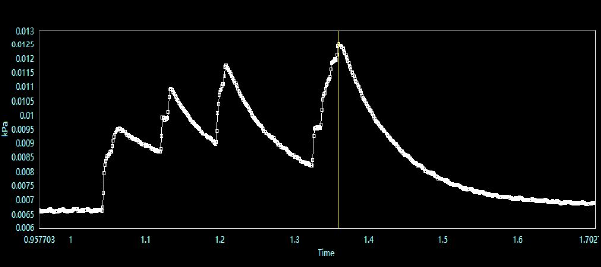
Instant Single Ejector Motion Waveform (Standard Model)

Pickup Time – 3 Stages Extended
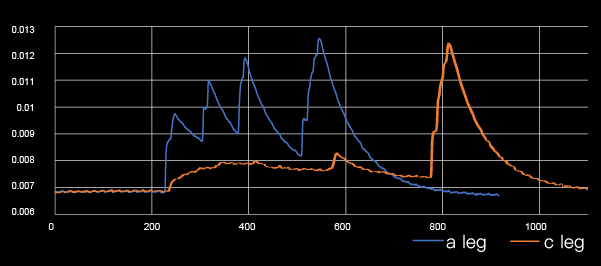
Speed – 3 Stages Slower
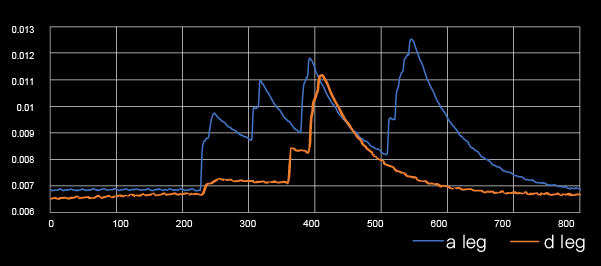
Ejector One-Stage Motion
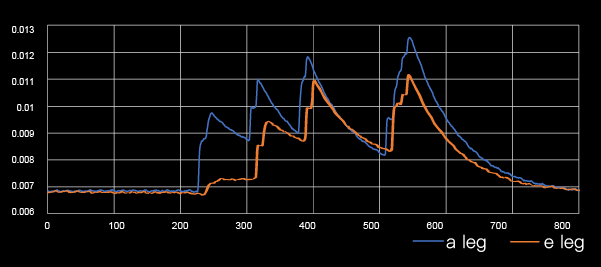
Ejector Two-Stage Motion
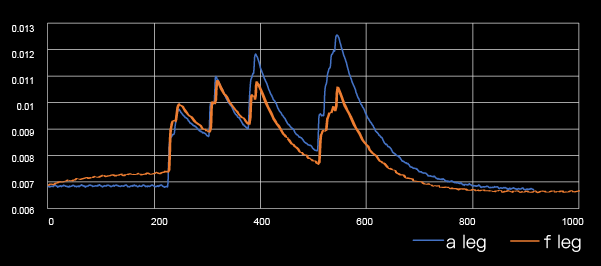
Ejector Jammed
Three-Stage Nozzle Parameter Die-Pick Graph and Timing Sequence Diagram

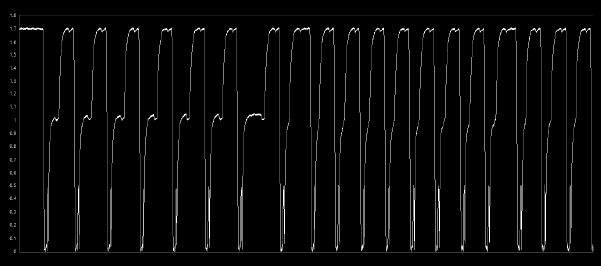
Vacuum Monitoring for Each Die Pick-Up by Nozzle
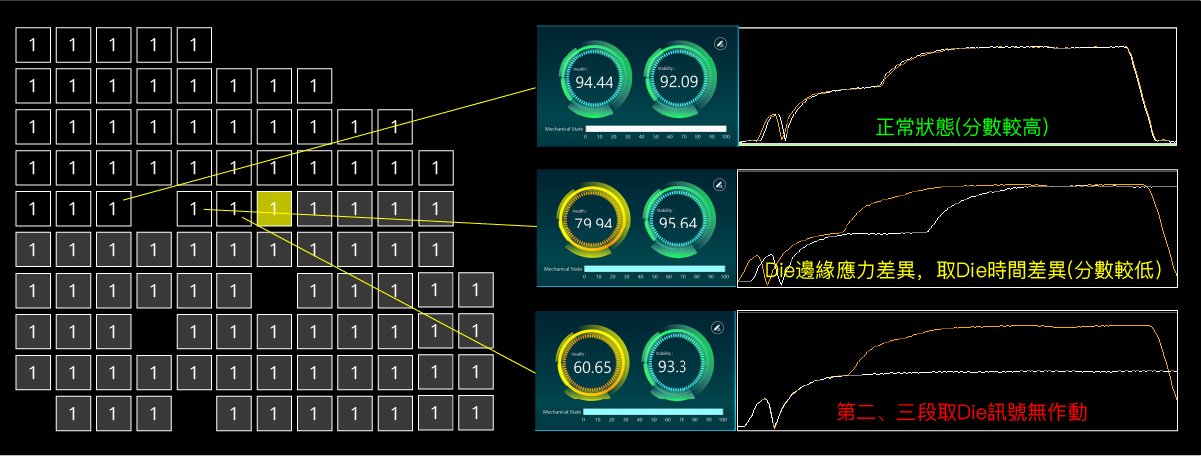
Measurement Conclusion
In conclusion, the stability of vacuum suction plays a critical role in the overall performance of the pick-and-place machine. Suction abnormalities not only disrupt the production process but also reduce product yield and line efficiency. To ensure stable and reliable operations, it is important to regularly inspect the vacuum pump and release valves to maintain proper system pressure. In addition, utilizing AI or machine learning to predict potential suction issues can significantly improve predictive maintenance and enhance stability during pick-up operations. These concrete measures help boost both efficiency and quality, laying a solid foundation for stable system operation.
The level of vacuum pressure directly determines the suction capability of the nozzle. When the nozzle contacts the surface of the wafer, appropriate contact pressure is required to ensure a secure grip. The machine learning intelligent monitoring system can convert correct pressure signals into standard patterns, allowing real-time monitoring of each suction action to ensure stability throughout the process.
Machine Learning Monitoring SystemMonitor each movement and track dynamic current signals to ensure consistent power delivery. Current thresholds are set based on product specifications and precision standards. Every action logs a data file for future anomaly analysis. Trend charts are generated based on dynamic process intervals to serve as a secondary standard for abnormality detection.
Pick & Place Machine Quality Monitoring IoT


